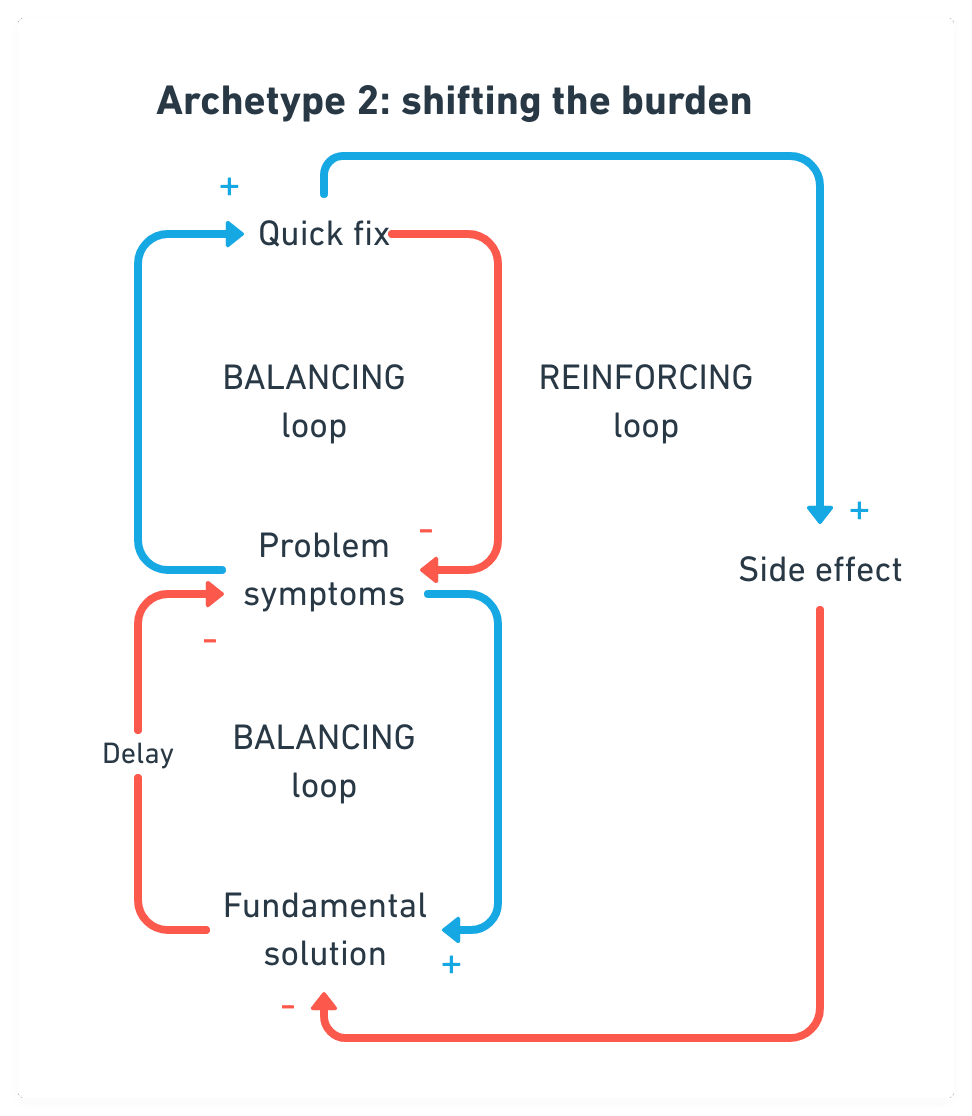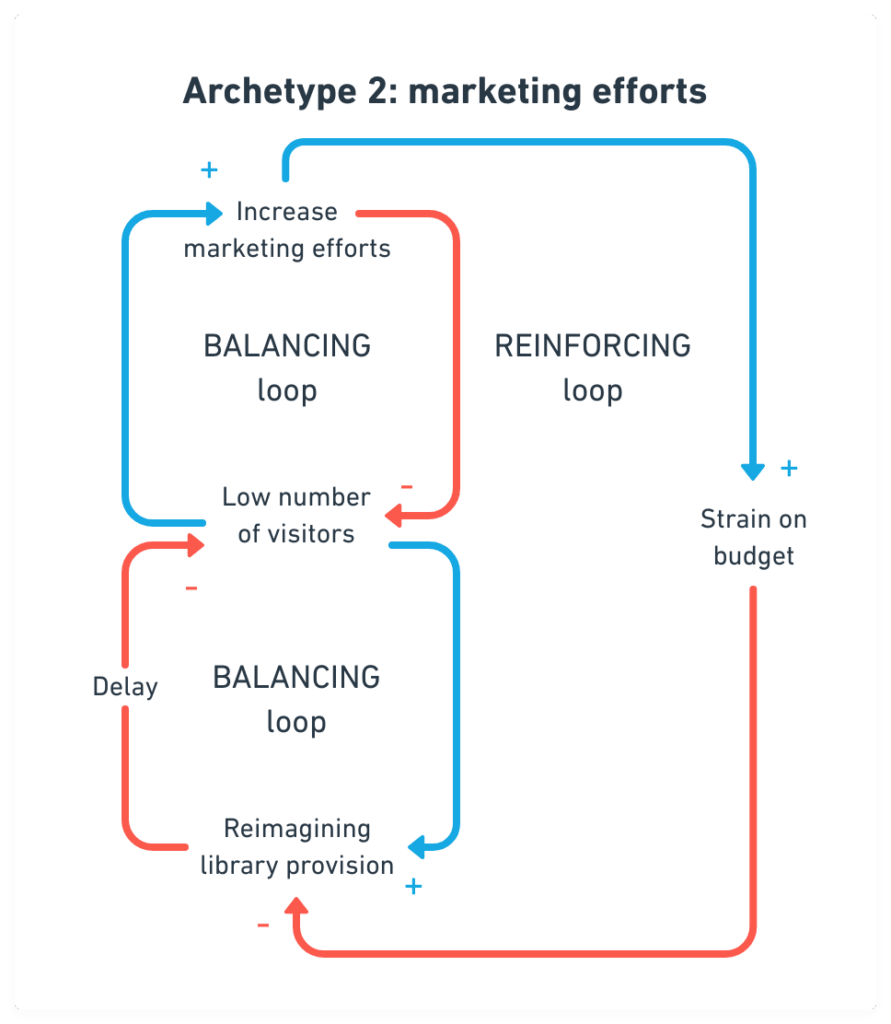TB871: Archetype 2 — Shifting the burden
Note: this is a post reflecting on one of the modules of my MSc in Systems Thinking in Practice. You can see all of the related posts in this category.
Activity 2.23 introduces a second archetype, where ‘quick fixes’ are made to deal with a problem, but this merely delays dealing with the underlying issues and implementing the ‘fundamental solution’.
In this archetype, the temptation is to deal with the easy, most obvious and urgent tasks first and leave the underlying problems unaddressed. As a consequence, dealing with the easy, most obvious and urgent tasks becomes a treadmill that doesn’t leave time for more fundamental action. Symptoms are relieved as a quick fix is applied, but the underlying problem is reinforced by the fix. The temptation to fix stays in place.
[…]
Examples of this archetype are often found where there is:
- procrastination
- preference for doing the quick, easy and urgent tasks first
- desire to earn the quick buck
- prioritisation of the urgent over the important.
It is also found where managers, for example, feel uncomfortable challenging difficult behaviour or poor performance and settle instead for workarounds, or become irritated with junior colleagues.
(The Open University, 2020)
Again, I’ve recreated the diagram from the module materials, colouring the arrows to make it easier to see how the loops are constructed:

In my situation of interest, I can imagine marketing being a ‘quick fix’. It might increase visitor numbers, but at the (literal) expense of reducing the budget for other activities. Without fundamentally reimagining what the library is for, then marketing is going to lead to diminishing returns:

References
- The Open University (2020) ‘2.3 SD in practice’, TB871 Block 2 Tools Stream [Online]. Available at https://learn2.open.ac.uk/mod/oucontent/view.php?id=2261481§ion=4.4.2 (Accessed 31 May 2024).
